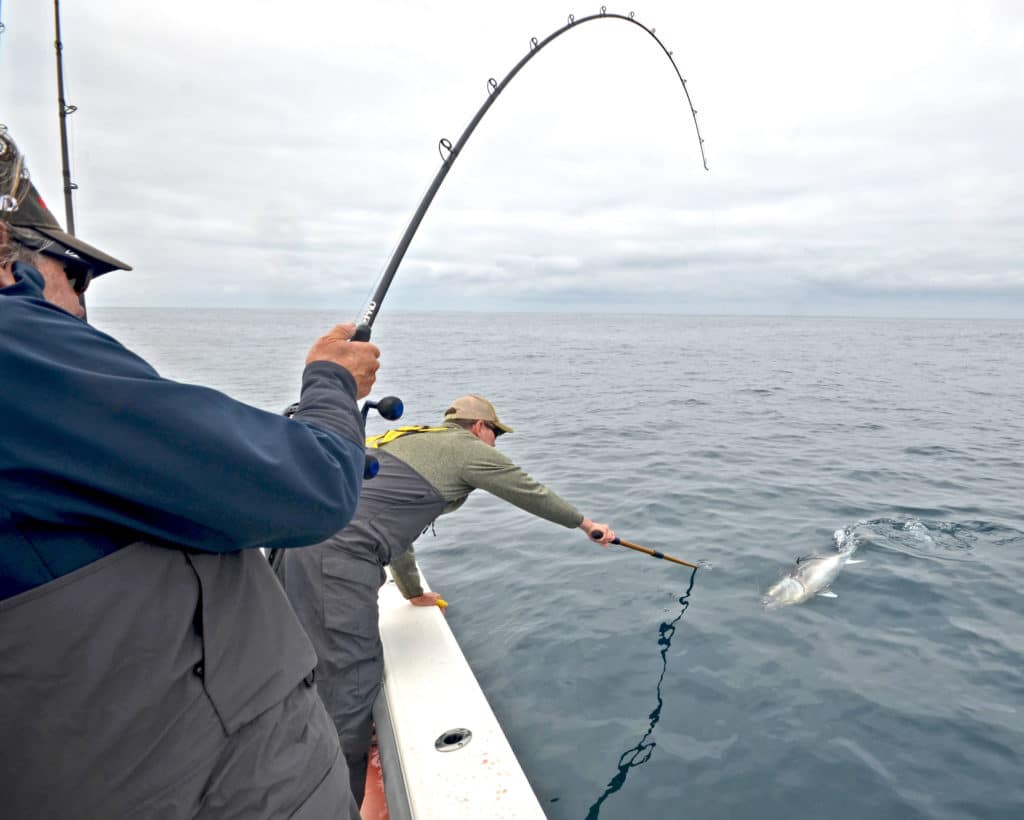
Anyone who has spent time fishing tuna in Southern California waters as of late can probably share a few stories about seeing the big “foamers” of feeding bluefin tuna. But for every one of those stories, anglers probably have several more they won’t share about countless miles spent driving around waiting for a school of tuna to pop up in a feeding frenzy. If you’ve found yourself telling the latter story more often than the former, you’re not alone. The good news is that there are ways to find and catch the tuna that aren’t feeding on the surface.
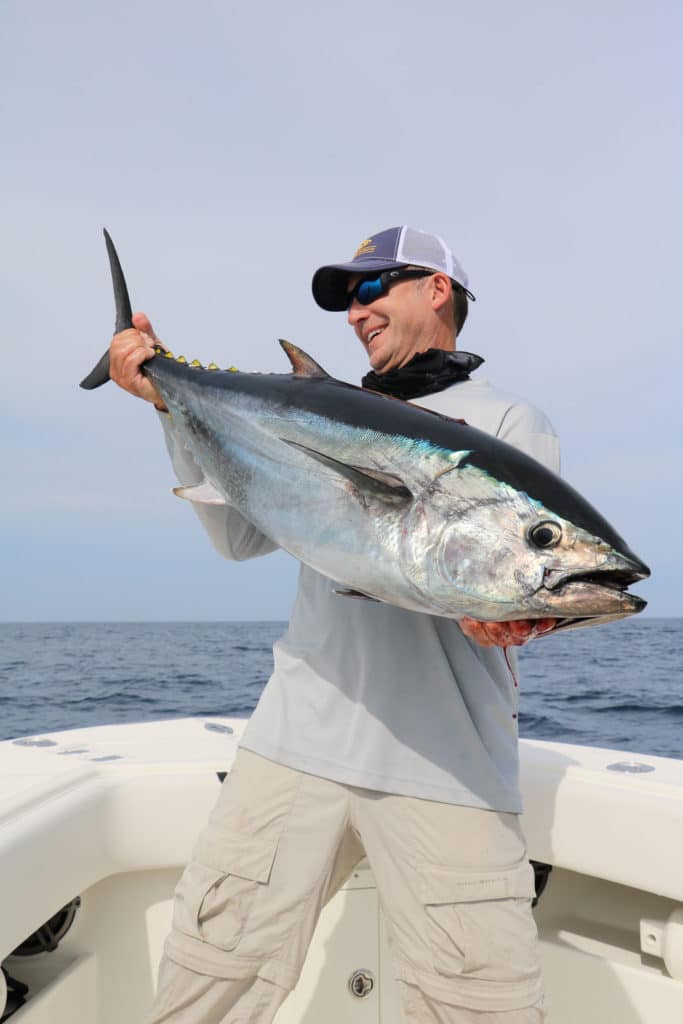
Online Tools
From as early as April through October or November, bluefin tuna can generally be found in deep schools and swimming on the surface. Pacific bluefin in this area can range from 50 to more than 300 pounds, certain indicators alert you to their presence.
Before I get into the specifics, here are several steps to take to put yourself in a position to find these tuna. Be it through a pay service like fishdope.com, a network of friends or following sport boat counts, you’ll find enough information available online these days to get an idea of the approximate areas where tuna are being caught on any given day.
Once you have that information, compare it to a sea-surface temperature chart and a chlorophyll chart to see the water temperature and clarity in the area. Then simply look for other areas with similar water conditions. If the bite is related to a color or temp break or to the edge of a deep-water bank, plan to look somewhere along that same edge.
Bird Brain
While this might seem like a lot more work than driving straight to where the fish bit yesterday, remember that if you easily found the location, a bunch of other anglers did too, and it’s no fun to fish in a crowd.
Once you arrive in the area you plan to search, hopefully at least several miles away from yesterday’s zone, start looking for birds. Two types of birds signal tuna—terns and shearwaters. Though very different in appearance and activity, both play a very specific role in finding fish.
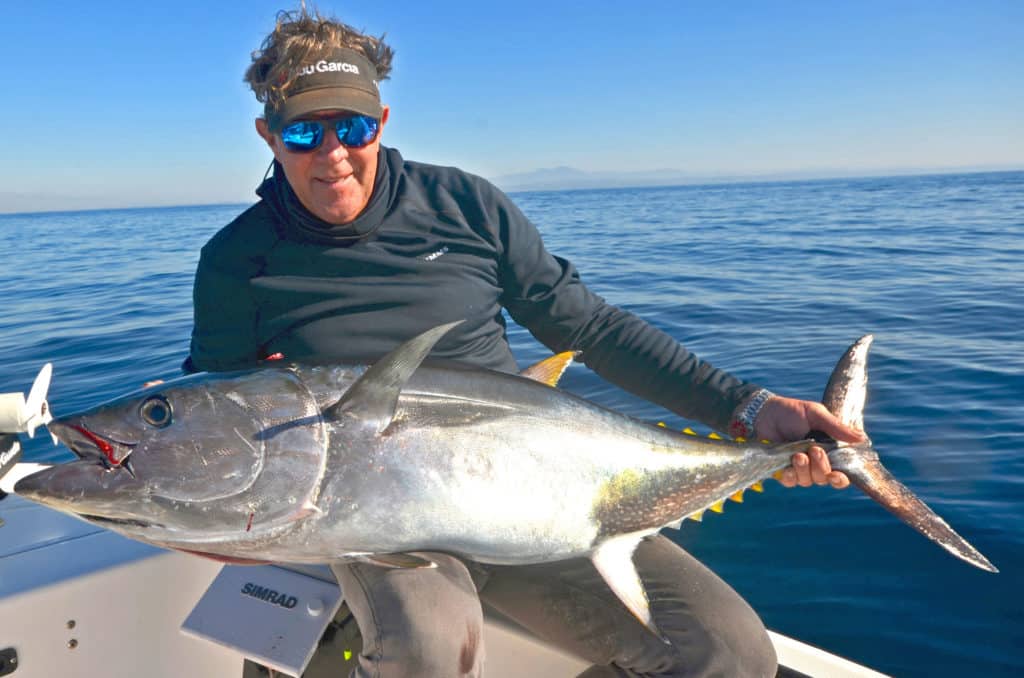
Shearwater Clues
Bluefin schools tend to swim deep in the morning before coming to the surface to feed on the later morning or midday slack tides. While driving around looking for a school swimming at a depth of 100 feet might be next to impossible, the dark, sooty-colored shearwaters often do the work for you.
Shearwaters raft up on the surface in areas that hold bait and tuna. While they can be tough to spot when sitting on the surface, they fly in a hopscotch pattern when the bait school moves.
This movement makes them fairly easy to find using binoculars. Drive close to them and flush them with your boat. If they scatter in different directions, they’re just on bait. But if they circle back and land in their original spot they’re usually on tuna.
At that point, slowly idle past the spot, and usually you’ll see the sonar light up with tuna returns. While these deep bluefin likely won’t be in a biting mood, wait them out until the slack tide, and they’ll usually come up foaming.
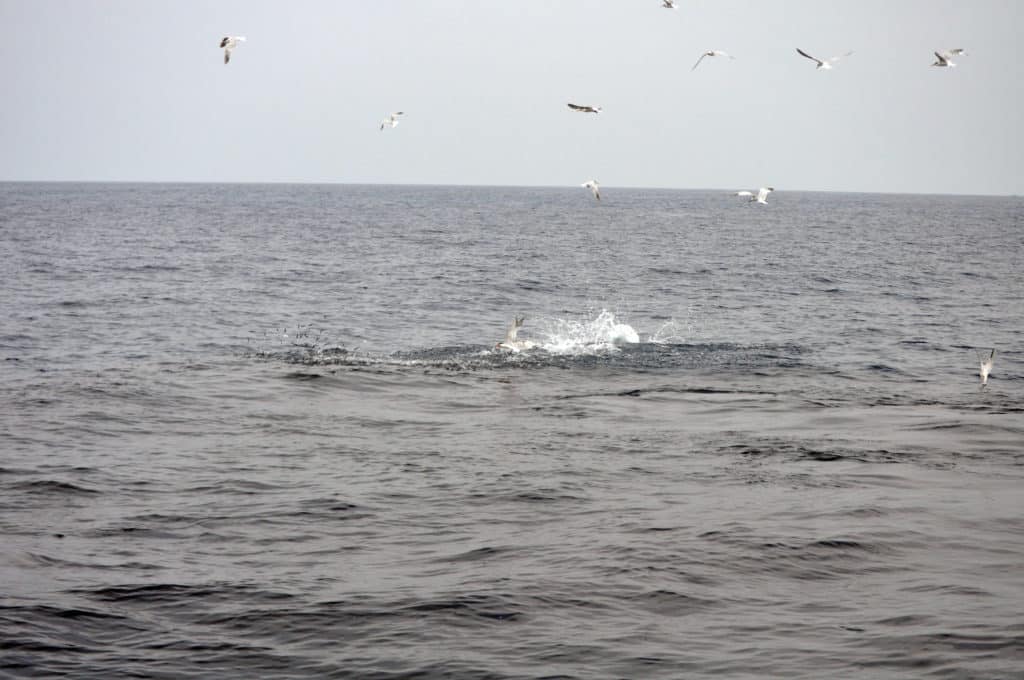
One Good Tern
Once the fish transition from deep water toward the surface, the shearwater’s helpfulness fades. Time to start looking for the white terns.
When searching for birds offshore, anglers often look for the huge diving flocks of terns often associated with bluefin foamers. That’s great if you’re lucky enough to be in an area with actively feeding fish. But sometimes all it takes is one or two terns working to give away the location of a tuna school.
When it comes to terns, the term “working” means that the birds are not flying around aimlessly, but are actively locked in on a specific section of water. Terns feed by using their superior eyesight to watch underwater activity and then attempt to intercept a fleeing baitfish if it should surface.
When terns fly high, they’re taking an overview of sub-surface feeding activity. Once they lock in on a target, they fly lower as the feeding activity moves toward the surface. If you find feeding tuna and you see a tern racing down toward the water, a tuna might be just below the surface. Get your lure flying in that direction as well.
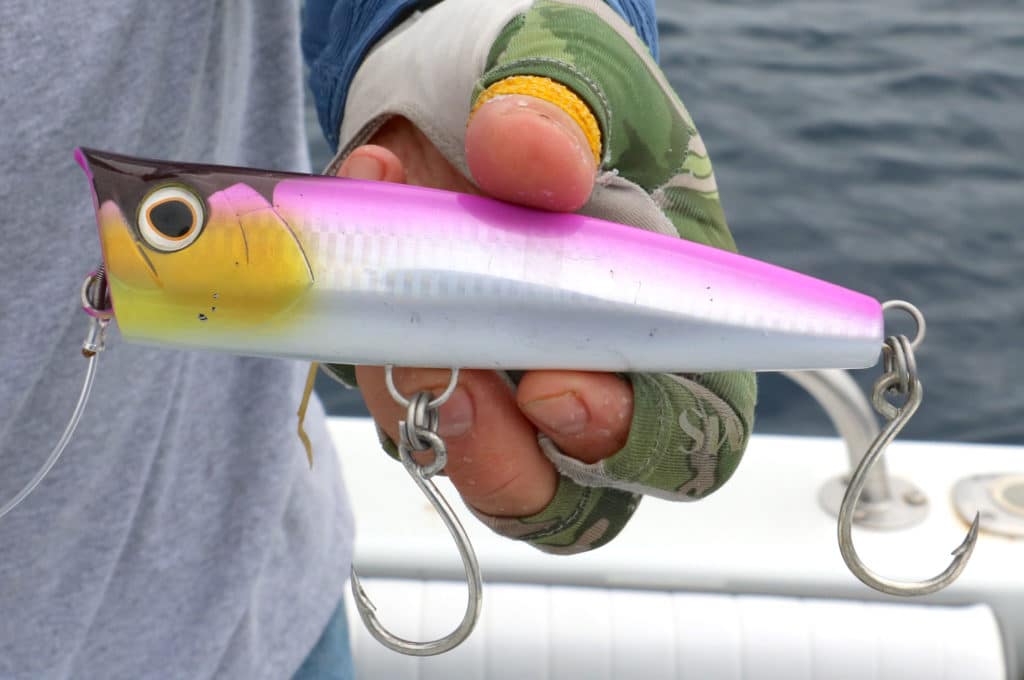
Breezing Fish
Tuna attack a variety of lure styles and presentations but poppers and sub-surface stick baits like the Yo-Zuri Hydro Minnow or Shimano Orca work best. Present these lures by making long sweeps of the rod tip and winding in the slack line before repeating.
When feeding near the surface but not foaming on a bait ball, tuna create a ripple on the ocean surface called a “breezer.” On a calm day, it can look like a patch of wind or on a breezy day, a patch of calm. Whichever the case, these tuna don’t just mill about. They actively swim in a particular direction in search of food.
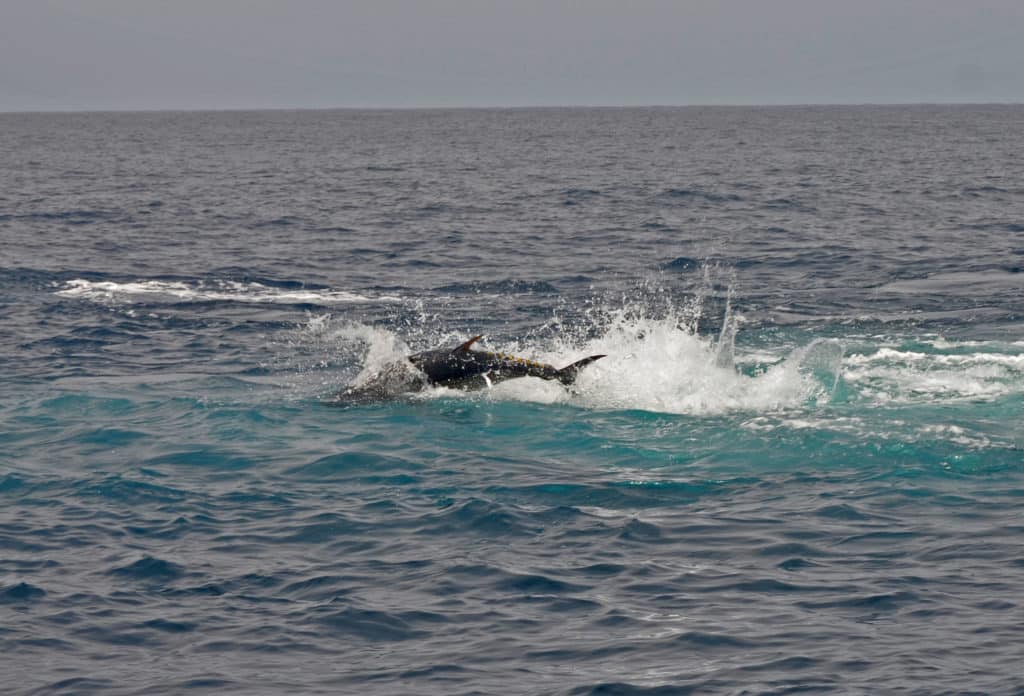
Approaching a School
When you first find a breezer, it might have a few terns on it, and you might see the occasional splash, flash of silver under the surface or boil. Rather than race right in and cast toward the commotion, try to judge the size of the school and its direction of travel. If that fish you just saw happened to be in the middle of the school, you’d run the whole school down before you ever got off a cast.
Getting Ahead
Once you locate the school’s leading edge, drive your boat away a good distance. Position the boat so the anglers can cast to the school as it approaches. Try to lead it enough that you can make casts perpendicular to the school’s direction of travel so that one or more of the fish can get a good look at the lure. If you don’t hook up, don’t wait for the school to pass. Get ahead of them again and try a slightly different presentation.
Read Next: Bluefin Tuna Invade Southern California Waters
Since you should be well away from the fleet when fishing, you shouldn’t have to hurry or race around. Sometimes it takes multiple approaches and different lures or presentations to get that first bite. Once you figure out what they want, you can pick off fish until you get tired of catching them.
While breezers might not be as exciting as foamers, finding them beats the heck out of not catching anything on days when the fish forego an all-out feeding frenzy.








